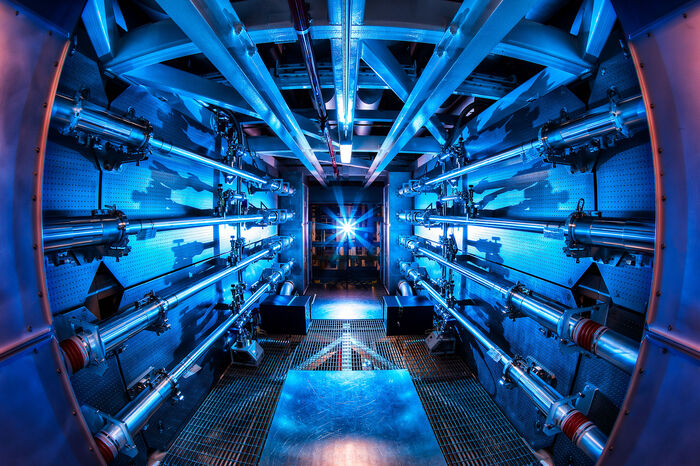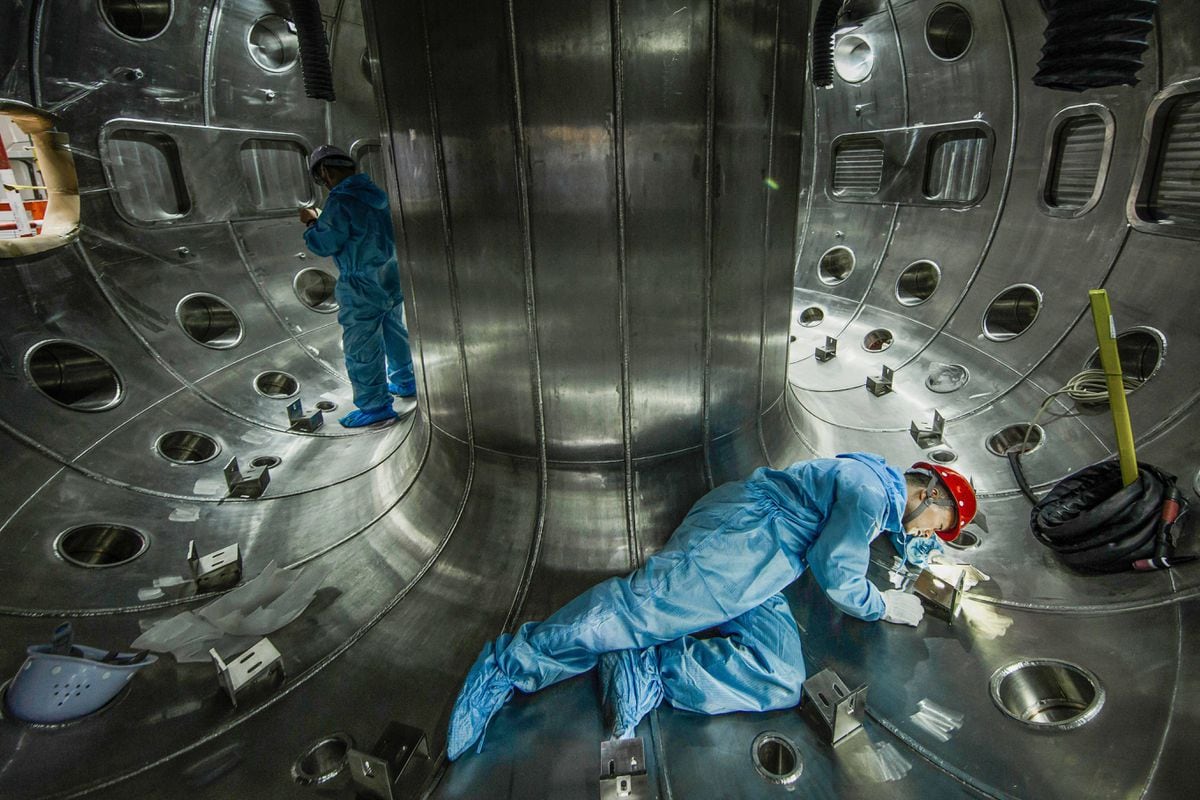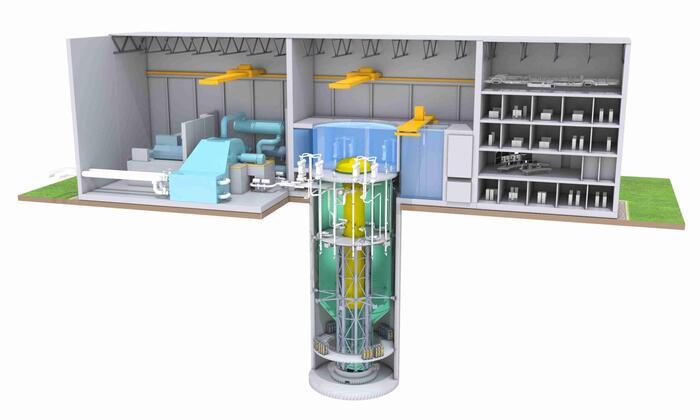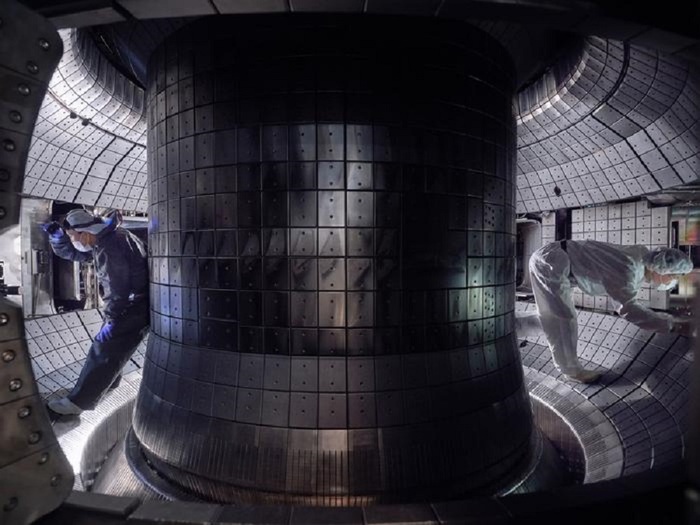The US-produced nuclear fusion energy was obtained at the National Ignition Facility, which studies inertial confinement fusion using lasers.
About 25 megajoules of energy were generated using a laser pulse of just over 20 megajoules.
Nuclear fusion expert Stefano Atzeni of the Sapienza University of Rome told ANSA.
"It is - he added - a controlled fusion experiment different from those with magnetic confinement. The result is important because for the first time an amount of energy higher than that used to obtain the reaction was generated".
Wp, the US towards the breakthrough on nuclear fusion
In the experiment, the energy generated by 192 lasers in a few billionths of a second The
energy produced in the United States was generated thanks to 192 laser beams in a few billionths of a second, in the National Ignition Facility experimental facility located in California at the Lawrence Livermore National Laboratory.
The experiment took place inside a vacuum chamber, i.e. a container from which the air is pumped out, and the lasers were aimed at a perforated cylindrical container a few millimeters long, Fabrizio Consoli, head of the laser for the Abc fusion of Enea.
The tiny cylinder in turn encloses a spherical capsule with a diameter of three or four millimeters, consisting of a shell that encloses two key elements for obtaining the nuclear fusion reaction: deuterium and tritium.
Penetrating through the holes in the cylinder, the laser beams hit the inside of the container, generating X-rays and these hit the shell of the sphere, removing it and transforming it into plasma, i.e. into a gas of electrically charged particles.
As the plasma expanded, it compressed the deuterium and tritium into the ideal pressure and temperature to trigger the fusion reaction.
Nuclear fusion, clean energy that imitates the Sun.
Different from the fission on which current power plants are based
A clean and potentially unlimited source of energy: this is the dream of nuclear fusion, i.e. the production of energy that mimics the reactions that take place in the heart of the stars.
It is a very different process compared to nuclear fission, which produces energy by exploiting the phenomenon of the division of atoms.
The fission power plants which have existed for a long time and have been at the center of harsh controversies due to the possible risks due to the fact that, alongside the production of energy, the splitting of atoms gives rise to radioactive products are based on the latter.
This is a very unstable reaction, which it is essential to keep under control.
The process of nuclear fusion is profoundly different: reproducing the process that takes place in stars means bringing two similar atoms closer together.
hydrogen until they fuse together.
This process can produce an enormous amount of energy and at the same time give rise to a very stable atom.
In fact, in the event of an accident, the reactor would shut down spontaneously.
The fusion process requires very high temperatures, up to 150 million degrees, against the 15 million degrees needed to trigger the fusion reaction in a star.
This is because the atoms inside the reactors are more rarefied than in stars and the heat helps to accelerate them to favor the fusion process.
The matter obtained in this way is called plasma.
The high temperatures of this form of matter make it necessary to contain it, otherwise the enclosing structure would melt.
To keep the plasma raised and confined to the
Nuclear fusion, the first star 'lit' 10 months ago
The first artificial star generated in the laboratory from a nuclear fusion experiment lit up ten months ago.
That spark had been obtained by the European experimental Jet reactor (Joint European Torus), in Great Britain, which had produced an amount of energy equal to 59 megajoules for five seconds, the equivalent of 11 megawatts.
It had been an extraordinary achievement, considering that until then the production of energy from nuclear fusion had lasted only fractions of a second.
That result sparked optimism all over the world because being able to maintain the fusion for five seconds meant being able to maintain it for longer times: "For five minutes and then for five hours", Tony Donnè, head of the European program on the Eurofusion nuclear fusion,
of which the Jet reactor is also a part. The energy obtained by Jet in February 2022 was double that which had been obtained by the same reactor 25 years earlier.
That pioneering machine has since been modified to make it more like the Iter experimental reactor, the result of a gigantic international effort and under construction in the South of France, in Cadarache.
For this reason, the little star lit up with Jet can be considered a sort of dress rehearsal of what can happen with Iter.
For example, between 2009 and 2011 the old carbon coating of the 'donut' in which the plasma must flow had been replaced with the same material used in Iter, i.e. a mixture of beryllium and tungsten which is very resistant to the very high temperatures that are reached from the plasma.















